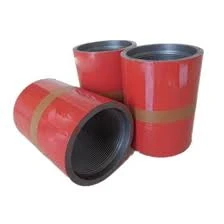- Afrikaans
- Albanian
- Amharic
- Arabic
- Armenian
- Azerbaijani
- Basque
- Belarusian
- Bengali
- Bosnian
- Bulgarian
- Catalan
- Cebuano
- Corsican
- Croatian
- Czech
- Danish
- Dutch
- English
- Esperanto
- Estonian
- Finnish
- French
- Frisian
- Galician
- Georgian
- German
- Greek
- Gujarati
- Haitian Creole
- hausa
- hawaiian
- Hebrew
- Hindi
- Miao
- Hungarian
- Icelandic
- igbo
- Indonesian
- irish
- Italian
- Japanese
- Javanese
- Kannada
- kazakh
- Khmer
- Rwandese
- Korean
- Kurdish
- Kyrgyz
- Lao
- Latin
- Latvian
- Lithuanian
- Luxembourgish
- Macedonian
- Malgashi
- Malay
- Malayalam
- Maltese
- Maori
- Marathi
- Mongolian
- Myanmar
- Nepali
- Norwegian
- Norwegian
- Occitan
- Pashto
- Persian
- Polish
- Portuguese
- Punjabi
- Romanian
- Russian
- Samoan
- Scottish Gaelic
- Serbian
- Sesotho
- Shona
- Sindhi
- Sinhala
- Slovak
- Slovenian
- Somali
- Spanish
- Sundanese
- Swahili
- Swedish
- Tagalog
- Tajik
- Tamil
- Tatar
- Telugu
- Thai
- Turkish
- Turkmen
- Ukrainian
- Urdu
- Uighur
- Uzbek
- Vietnamese
- Welsh
- Bantu
- Yiddish
- Yoruba
- Zulu
Understanding the Features and Applications of J55 Couplings in Oil and Gas Industry
Understanding J55 Coupling A Comprehensive Overview
In the ever-evolving world of industrial applications, the need for effective and reliable components plays a pivotal role in ensuring operational efficiency. One such component is the J55 coupling, particularly prominent in the oil and gas industry, where it serves crucial functions. This article delves into the characteristics, applications, and importance of J55 couplings, shedding light on why they are indispensable in various engineering fields.
What is J55 Coupling?
J55 coupling is a specific type of coupling used primarily in conjunction with J55 casing pipes. J55 is a designation that refers to the yield strength of steel used in the manufacturing of these pipes—they typically have a yield strength of 55,000 psi (pounds per square inch). The coupling serves as a connector between two lengths of casing pipe, ensuring a strong, secure joint that can withstand high pressure and temperature conditions prevalent in oil and gas extraction processes.
The J55 coupling is made from high-strength steel, often designed to tolerate extreme conditions and support heavy loads. Its robustness makes it ideal for deep well applications where traditional couplings might fail. The design of the J55 coupling typically features threaded ends that enable precise, tight connections, a vital feature for preventing fluid leaks in high-pressure systems.
Applications of J55 Coupling
The primary application of J55 couplings is in the oil and gas industry, particularly in drilling operations. When drilling depths exceed several thousand feet, the integrity of the casing becomes paramount. Couplings help to establish a stable and secure pipeline that can transport oil and gas from the subsurface to the surface, preventing blowouts and ensuring a steady flow of resources.
Moreover, J55 couplings are also utilized in other fields, including water well drilling and geothermal applications. In these scenarios, similar principles apply, where the strength and reliability of pipe connections are crucial. The versatility of J55 couplings makes them suitable for a range of environments, from offshore drilling platforms to land-based oilfields.
j55 coupling

Manufacturing and Standards
The manufacturing of J55 couplings involves rigorous testing and quality control to meet industry standards. Specifications set out by organizations such as the American Petroleum Institute (API) guide the manufacturing processes, ensuring that these couplings can withstand the demands of their applications. These standards cover various factors, including material properties, dimensional tolerances, and strength requirements.
Typically, the manufacturing process involves hot rolling or forging techniques, followed by heat treatment to enhance the mechanical properties of the steel. Quality assurance measures such as ultrasonic testing and magnetic particle inspection are employed to detect any imperfections or faults, guaranteeing the integrity and safety of the product before it reaches the field.
Importance of J55 Coupling in the Industry
The significance of J55 couplings cannot be overstated. They provide not just structural support but also contribute significantly to the safety of operations. A failed coupling can lead to serious accidents, environmental harm, and significant financial losses. As oil and gas reserves are found in increasingly challenging environments, the reliability of couplings becomes even more critical.
Additionally, the global push toward more sustainable and environmentally friendly extraction methods places pressure on the industry to utilize high-quality components that minimize environmental impact. J55 couplings, designed to prevent leaks and ensure the secure transport of resources, align well with these goals.
Conclusion
In summary, J55 couplings represent a cornerstone of modern drilling and resource extraction practices. Their strength, reliability, and ability to withstand harsh conditions make them an essential component in the oil and gas industry and beyond. As technological advancements continue to drive the industry forward, the importance of robust, high-quality components like J55 couplings will only increase. Understanding these applications and the engineering principles behind them is essential not only for professionals in the field but also for stakeholders concerned with the safety and sustainability of energy production.
-
Tubing Pup Joints: Essential Components for Oil and Gas OperationsNewsJul.10,2025
-
Pup Joints: Essential Components for Reliable Drilling OperationsNewsJul.10,2025
-
Pipe Couplings: Connecting Your World EfficientlyNewsJul.10,2025
-
Mastering Oilfield Operations with Quality Tubing and CasingNewsJul.10,2025
-
High-Quality Casing Couplings for Every NeedNewsJul.10,2025
-
Boost Your Drilling Efficiency with Premium Crossover Tools & Seating NipplesNewsJul.10,2025







